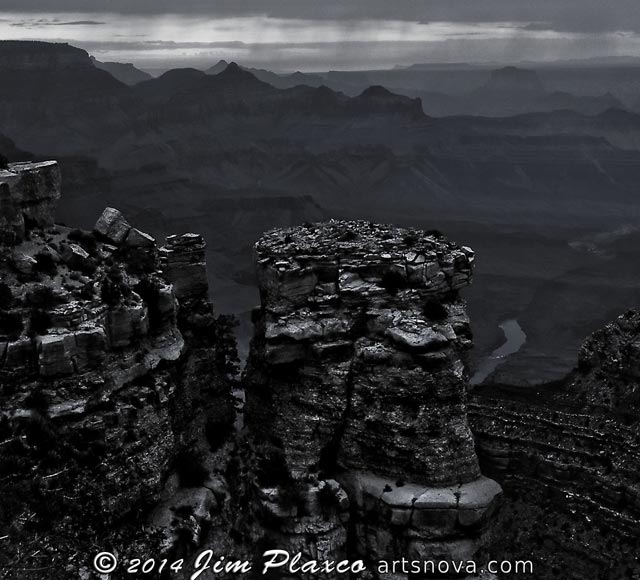A Pillar of Rock at Grand Canyon National Park

Rock Pillar, Grand Canyon National Park, Arizona
Twenty20 (formerly Instacanvas) is a art and photography print-on-demand (POD) service that I joined earlier this year just to see about using it as a means of selling my mobile photography posted to Instagram. That didn't last long. I rather quickly decided to start posting artwork and my DSLR photography to Instagram/Twenty20 – rather than photos taken with my smart phone's camera.
One aspect of Twenty20 that has kept me adding new content is their challenges in which members are encouraged to submit images to theme-based contests. I most recently decided to submit a photograph to their Rock Formations Challenge and was quite pleased when I got an email from Twenty20 telling me that my contest submission was being featured on the Twenty20 home page. NOTE: My day in the sun has already come and gone but the Rock Formations Challenge is still underway.
It took some time for me to locate a photograph that emphasized a rock formation. Actually I have lots of photographs of rock formations but finding one that I wanted to submit was the challenge. I finally settled on a photograph of a pillar of rock photographed from the South Rim of Grand Canyon National Park in Arizona. Adding to the drama of the scene that day was the stormy weather – far more dramatic than clear blue sunny skies.
There are two interesting points I would like to make regarding this photograph. First, the photo I posted to the contest has a significant portion of the image cropped out. In part this was to satisfy Twenty20's square aspect ratio requirements. The other consideration was cropping the image for composition purposes in order to emphasize the rock pillar.
The second and far more interesting point is that this photograph was never meant to stand alone. It was one in a series of bracketed exposure photographs to be used in the construction of an HDRI (High Dynamic Range Imaging) photograph. By bracketed I mean taking multiple photographs of the same scene varying only the exposure time. I take three or more photographs: one or more under-exposed, one correctly exposed, and one or more over-exposed. The over-exposed shot reveals details in the dark regions of the image while the under-exposed shot preserves details in the bright regions. Stacking and merging three separate photographs together produces an image rich in detail and color. In Photoshop the creation of an HDR image is most simply accomplished by selecting the individual images using Adobe Bridge and then using the Merge to HDR Photoshop tool option.

Three Full Frame Exposures for Rock Pillar Grand Canyon
It was the HDR version that I was going to submit to the contest. However in looking at each of the three individual exposures as photographs in their own right, I was struck by the mood created by the underexposed photograph. I happened to open up the Photoshop channels palette to check out each individual RGB channel. Individual channels are gray scale images and it was seeing the photograph in black and white that led me to desaturate the photo. To my surprise I found the black and white version much more appealing than the color version. And that is how I came to submit an underexposed black and white photograph – rather than an HDR photograph – to the contest.
With respect to the image cropping, you can compare the cropped version of Rock Pillar Grand Canyon at Twenty20.com with the uncropped version of Rock Pillar Grand Canyon at Artflakes.com
The moral to this story is to keep your options, your eyes, and your mind open when it comes to the creative aspects of art and photography. Make it a point to explore and consider alternatives. Your work will be the better for it.
| Return to the Blog Index | This entry was posted on Wednesday, May 21st, 2014 at 3:03 pm and is filed under Art Contests, Digital Photography, Photoshop.